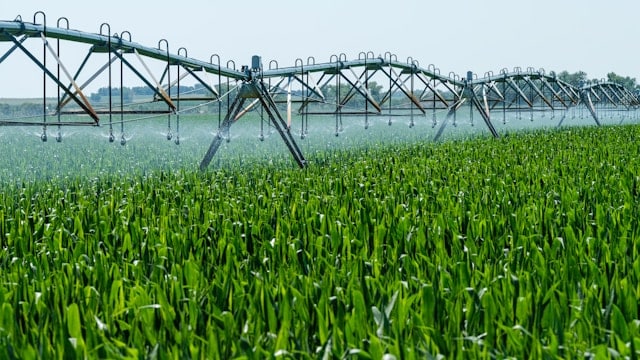The subject of harvesting rainwater, or "RWH" as it is often abbreviated, is growing in relevance. As you consider a new development, it’s crucial to understand the financial gains of incorporating RWH systems. This article will delve into the economic benefits of these systems, from cost savings to increased property value, and risk mitigation.
Understanding Rainwater Harvesting Systems
Before we delve into the financial advantages of incorporating rainwater harvesting systems into new developments, it would be beneficial for you to understand the basic premise and functioning of these systems.
A découvrir également : What Are the Key Considerations for Building Eco-Friendly Affordable Housing in Urban Areas?
Rainwater harvesting systems are innovative mechanisms designed to collect, filter and store rainwater for future use. According to data from the Google scholar, these systems can vary in complexity, from simple barrel collectors to more advanced setups with pumps and filtration systems.
The process begins with rainwater being collected from various surfaces, such as rooftops, and channelled into a storage tank. This water is then treated and used in various ways, including irrigation, flushing toilets, laundry, and in some cases, drinking. The exact application depends on the level of treatment the water undergoes.
Avez-vous vu cela : How Can Property Managers Implement Smart Parking Solutions in Urban Real Estate?
Importantly, RWH systems reduce demand on the municipal water supply. By using harvested rainwater for non-potable uses, you can significantly cut down on your total water consumption. In areas experiencing water scarcity, this is a substantial advantage.
The Financial Benefits of Rainwater Harvesting Systems
The financial gains from incorporating RWH systems into your new development are far-reaching and may have more impact than you initially anticipate.
Firstly, RWH systems can provide significant cost savings on your water bills. By using harvested rainwater for non-potable uses, your demand for mains water decreases, resulting in lower utility costs. In an economic analysis, it was found that properties with RWH systems could potentially save 50% or more on their water bills, depending on the size of the system and the rainfall in the area.
Secondly, the installation of RWH systems can increase the property value of your new development. As sustainable and efficient systems become more desirable in the property market, properties with RWH systems are often seen as more valuable. According to Crossref, homes with RWH systems have seen an increase in their property value by up to 6%.
Lastly, RWH systems can act as a form of risk mitigation against the rising costs of water. As scarcity increases and water prices rise, having an alternative water supply can protect you against future financial risk.
Economic Analysis of Rainwater Harvesting Systems
An economic analysis of RWH systems can provide a clear picture of the financial benefits of such an investment.
Firstly, the cost of installation and maintenance of RWH systems must be considered. While these costs can be substantial, they can often be offset by the savings made on water bills over time. Furthermore, incentives and rebates are often available for installing water-saving systems, reducing the total cost burden.
Secondly, the potential increase in property value should be factored into the analysis. As noted earlier, properties with RWH systems are often more appealing in the property market. This increase in value can be a significant financial benefit for new developments.
Thirdly, the risk mitigation aspect of RWH systems is a crucial factor in the economic analysis. With water prices fluctuating and expected to rise, having a sustainable water source can provide financial security.
Incorporating Rainwater Harvesting Systems in New Developments: A Demand-Supply Model
A demand-supply model can be useful in assessing the financial benefits and feasibility of incorporating RWH systems in new developments.
The demand side of the model looks at the potential water savings and the consequent reduction in water bills, the potential increase in property value, and the level of interest among potential buyers or tenants for properties with sustainable systems.
On the supply side, the model considers the cost of installing and maintaining the RWH systems, the availability of incentives or rebates, and the potential financial risk mitigation against rising water costs.
By balancing these demand and supply factors, a more informed decision can be made about incorporating RWH systems into new developments.
As we have seen, the financial advantages of incorporating rainwater harvesting systems into new developments are significant and multifaceted. By understanding these benefits and undertaking a comprehensive economic analysis, you can make an informed decision about incorporating these systems into your new development.
Long-Term Financial Sustainability of Rainwater Harvesting Systems
While we’ve examined the direct financial benefits of rainwater harvesting systems, it’s also important to consider the long-term financial sustainability of these systems in new developments.
Installing an RWH system is an investment that can yield substantial financial rewards over time. The initial installation and maintenance costs are typically offset by significant savings on water bills. According to a study cited in Google scholar, homeowners can expect to recoup their investment in an RWH system within a few years.
The long-term financial sustainability of an RWH system is also underpinned by the increasingly high value placed on green infrastructure in the property market. Incorporating such features into new developments is becoming a strong selling point, enhancing the development’s attractiveness to potential buyers or tenants.
Furthermore, with climate change leading to an increased frequency of droughts and water scarcity, the demand for independent water resources is likely to rise. Implementing RWH systems provides a reliable water supply that can adapt to changing water demand patterns, thereby reducing financial risk and contributing to long-term sustainability.
Conclusion: A Vital Investment for Sustainable Development
Incorporating rainwater harvesting systems into new developments presents significant financial advantages. From immediate cost savings on water bills to increased property value and risk mitigation against fluctuating water prices, the economic benefits are considerable.
The long-term financial sustainability of RWH systems further strengthens their appeal. They offer an effective solution to the escalating water demand due to climate change and population growth, reducing dependency on municipal water supply, and promoting sustainable water use.
Moreover, through an economic analysis and a demand-supply model, developers can gain a comprehensive understanding of the financial prospects of integrating these systems into their projects. These tools provide valuable insights into the potential water savings, increased property value, financial risk mitigation, and the costs involved.
In a world where the demand for sustainable, efficient, and self-reliant homes is growing, incorporating RWH systems into new developments is not only an environmentally conscious choice but also a financially sound investment. As a developer, it provides a competitive edge, offering properties that meet the increasing demand for sustainable living solutions while also reaping significant financial benefits.
Whether seen from the perspective of cost savings, increased property value, or risk mitigation, the financial advantages of RWH systems in new developments are clear. With careful planning and a thorough understanding of these benefits, incorporating rainwater harvesting systems can be a savvy and sustainable choice for future developments.











